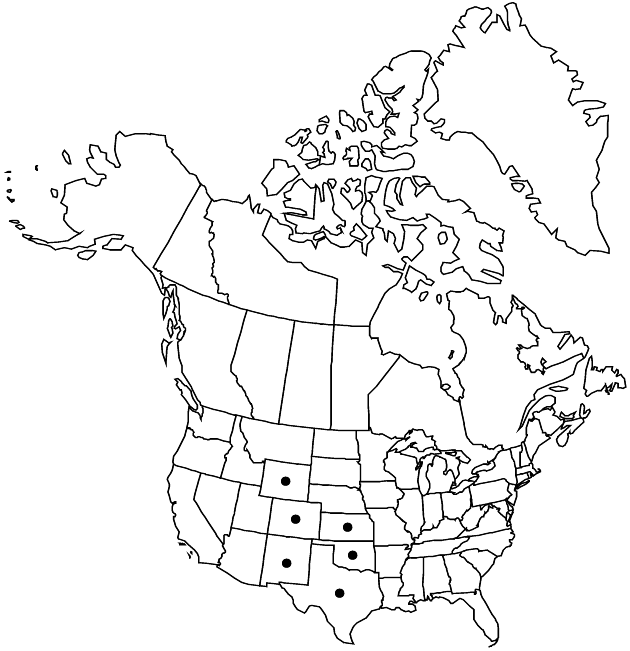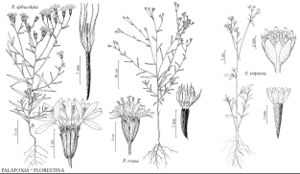Difference between revisions of "Palafoxia rosea"
Rhodora 48: 86. 1946.
FNA>Volume Importer |
FNA>Volume Importer |
||
| Line 10: | Line 10: | ||
|name=Othake roseum | |name=Othake roseum | ||
|authority=Bush | |authority=Bush | ||
| + | |rank=species | ||
|publication_title=Trans. Acad. Sci. St. Louis | |publication_title=Trans. Acad. Sci. St. Louis | ||
|publication_place=14: 175. 1904 | |publication_place=14: 175. 1904 | ||
| Line 16: | Line 17: | ||
|name=Palafoxia rosea var. macrolepis | |name=Palafoxia rosea var. macrolepis | ||
|authority=(Rydberg) B. L. Turner & M. I. Morris | |authority=(Rydberg) B. L. Turner & M. I. Morris | ||
| + | |rank=variety | ||
}} | }} | ||
|hierarchy=Asteraceae;Asteraceae tribe Heliantheae;Asteraceae (tribe Heliantheae) subtribe Chaenactidinae;Palafoxia;Palafoxia rosea | |hierarchy=Asteraceae;Asteraceae tribe Heliantheae;Asteraceae (tribe Heliantheae) subtribe Chaenactidinae;Palafoxia;Palafoxia rosea | ||
| Line 40: | Line 42: | ||
-->{{#Taxon: | -->{{#Taxon: | ||
name=Palafoxia rosea | name=Palafoxia rosea | ||
| − | |||
|authority=(Bush) Cory | |authority=(Bush) Cory | ||
|rank=species | |rank=species | ||
| Line 55: | Line 56: | ||
|publication year=1946 | |publication year=1946 | ||
|special status= | |special status= | ||
| − | |source xml=https://jpend@bitbucket.org/aafc-mbb/fna-data-curation.git/src/ | + | |source xml=https://jpend@bitbucket.org/aafc-mbb/fna-data-curation.git/src/eaa6e58056e40c9ef614d8f47aea294977a1a5e9/coarse_grained_fna_xml/V19-20-21/V21_985.xml |
|tribe=Asteraceae tribe Heliantheae | |tribe=Asteraceae tribe Heliantheae | ||
|subtribe=Asteraceae (tribe Heliantheae) subtribe Chaenactidinae | |subtribe=Asteraceae (tribe Heliantheae) subtribe Chaenactidinae | ||
Revision as of 19:40, 16 December 2019
Annuals, 10–50 cm. Stems scabrous to glabrate, not stipitate-glandular. Leaf blades linear-lanceolate, 30–60 × 2–6(–10) mm. Involucres ± turbinate. Phyllaries 5–10 × 1–2.5 mm, ± equal, usually scabrellous and stipitate-glandular. Ray florets 0. Disc florets 5–30; corollas actinomorphic, 7–10 mm, throats ± funnelform, shorter than lobes. Cypselae 5–8 mm; pappus scales of inner cypselae (1.5–)3–8 mm. 2n = 20.
Phenology: Flowering spring–fall.
Habitat: Sandy soils
Elevation: 100–1500 m
Distribution

Colo., Kans., N.Mex., Okla., Tex., Wyo.
Discussion
Plants of Palafoxia rosea with phyllaries 7–10 (versus 5–7) mm and pappus scales 3–8 (versus 1–3) mm have been treated as var. macrolepis. Some specimens are not readily assignable to either variety, and some are not readily assignable to either P. rosea or P. texana. Other specimens referred here to P. rosea closely resemble P. callosa.
Selected References
None.
